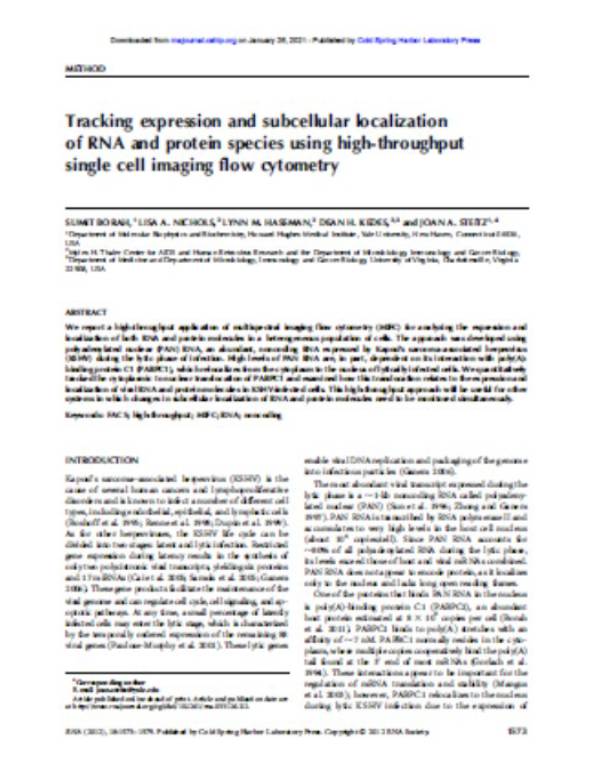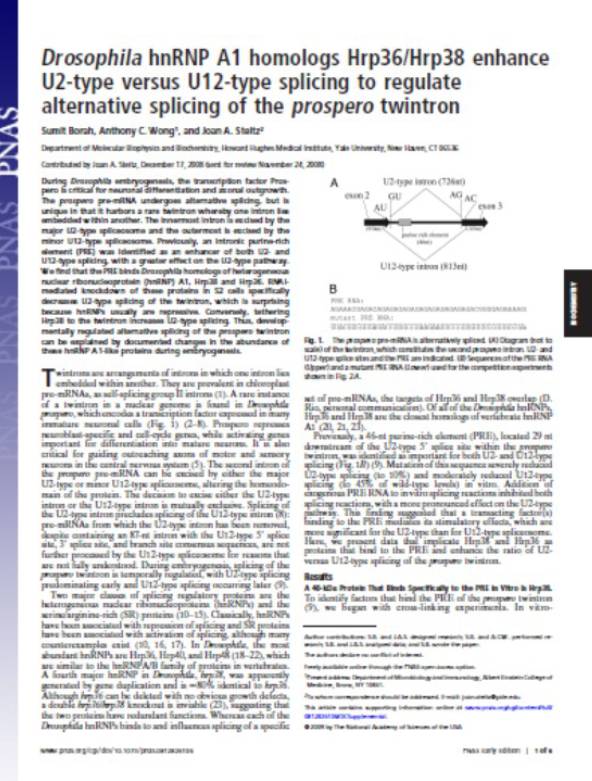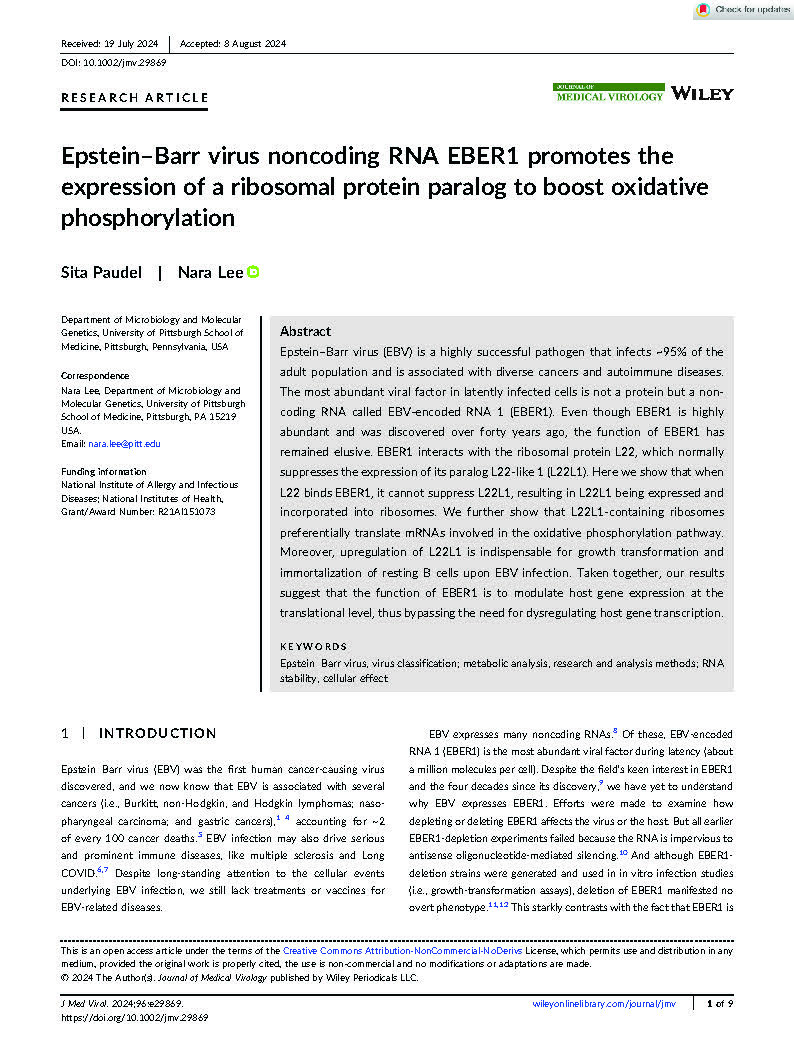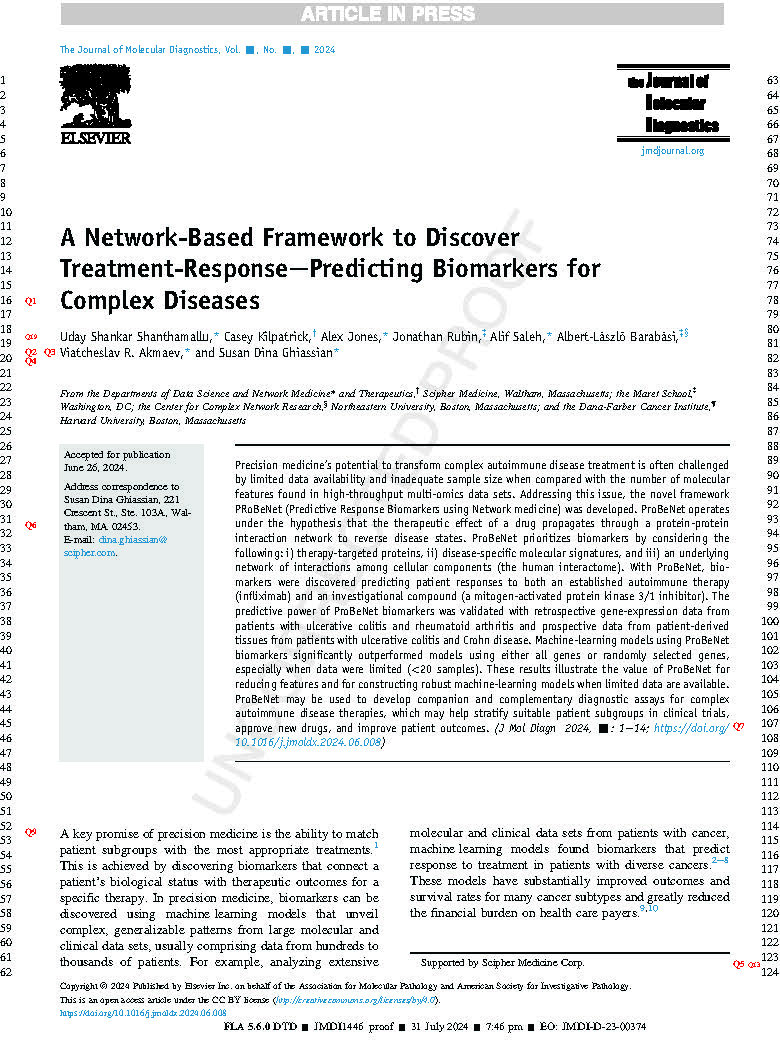Research-Article Samples

Working with Sumit is an exceptional experience. His professionalism and attention to detail are always evident. Sumit has a unique ability to explain complex concepts with simple language. He is always very responsive and respectful of deadlines, and he maintains open communication, making the whole process smooth and efficient. We’ve drafted impactful manuscripts and published in high impact journals. I highly recommend.
DINA GHIASSIAN, PhD
Director, Data Science and Network Medicine
The Journal of Medical Virology
Epstein-Barr virus (EBV) is a highly successful pathogen that infects ~95% of the adult population and is associated with diverse cancers and autoimmune diseases. The most abundant viral factor in latently infected cells is not a protein but a noncoding RNA called EBV-encoded RNA 1 (EBER1). Even though EBER1 is highly abundant and was discovered over forty years ago, the function of EBER1 has remained elusive. EBER1 interacts with the ribosomal protein L22, which normally suppresses the expression of its paralog L22-like 1 (L22L1). Here we show that when L22 binds EBER1, it cannot suppress L22L1, resulting in L22L1 being expressed and incorporated into ribosomes. We further show ….
The Journal of Molecular Diagnostics
Precision medicine’s potential to transform complex autoimmune disease treatment is often challenged by limited data availability and inadequate sample size when compared with the number of molecular features found in high-throughput multi-omics data sets. Addressing this issue, the novel framework PRoBeNet (Predictive Response Biomarkers using Network medicine) was developed. ProBeNet operates under the hypothesis that the therapeutic effect of a drug propagates through a protein-protein interaction network to reverse disease states. ProBeNet prioritizes biomarkers by considering the following: i) therapy-targeted proteins, ii) disease-specific molecular signatures, and iii) an underlying network of interactions among cellular components….
Science Spotlight Series, Solve ME/CFS
In our Solve Science Spotlight series, we’re summarizing significant publications and presentations about ME/CFS, Long Covid, and other infection-associated chronic conditions and illnesses (IACCIs). Our goals are to make complex scientific discoveries accessible to everyone and help you stay informed about the newest advancements in the field. The majority of these pieces are written by Sumit Borah, a science writer at Oxford Square and a consultant with Solve.

The Journal of Molecular Diagnostics
Aberrant CpG dinucleotide methylation in a specific region of the telomerase reverse transcriptase (TERT) promoter is associated with increased TERT mRNA levels and malignancy in several cancer types. However, routine screening of this region to aid cancer diagnosis can be challenging because i) several established methylation assays may inaccurately report on hypermethylation of this particular region, ii) interpreting the results of methylation assays can sometimes be difficult for clinical laboratories, and iii) use of high-throughput methylation assays for a few patient samples can be cost prohibitive…

Science
Special DNA sequences at the ends of chromosomes, called telomeres, are replenished by a dedicated enzyme called telomerase. A subset of human tumors harbors mutations in the promoter region of the TERT gene, which codes for a subunit of telomerase. Borah et al. explored the downstream effects of TERT promoter mutations in cells derived from urothelial (urinary tract) cancers. The mutations were associated with aberrantly high levels of TERT mRNA, TERT protein and telomerase activity, and longer telomeres. A small study of clinical samples suggested that high levels of TERT mRNA may…

RNA
We report a high-throughput application of multispectral imaging flow cytometry (MIFC) for analyzing the expression and localization of both RNA and protein molecules in a heterogeneous population of cells. The approach was developed using polyadenylated nuclear (PAN) RNA, an abundant, noncoding RNA expressed by Kaposi’s sarcoma–associated herpesvirus (KSHV) during the lytic phase of infection. High levels of PAN RNA are, in part, dependent on its interaction with poly(A)-binding protein C1 (PABPC1), which relocalizes from the cytoplasm to the nucleus of lytically infected cells. We…

PLOS Pathogens
During the lytic phase of infection, the gamma herpesvirus Kaposi’s Sarcoma-Associated Herpesvirus (KSHV) expresses a highly abundant, 1.1 kb nuclear noncoding RNA of unknown function. We observe that this polyadenylated nuclear (PAN) RNA avidly binds host poly(A)-binding protein C1 (PABPC1), which normally functions in the cytoplasm to bind the poly(A) tails of mRNAs, regulating mRNA stability and translation efficiency. During the lytic phase of KSHV infection, PABPC1 is re-localized to the nucleus as a consequence of expression of the viral shutoff exonuclease (SOX) protein; SOX also…

Proceedings of the National Academy of Sciences
During Drosophila embryogenesis, the transcription factor Prospero is critical for neuronal differentiation and axonal outgrowth. The prospero pre-mRNA undergoes alternative splicing, but is unique in that it harbors a rare twintron whereby one intron lies embedded within another. The innermost intron is excised by the major U2-type spliceosome and the outermost is excised by the minor U12-type spliceosome. Previously, an intronic purine-rich element (PRE) was identified as an enhancer of both U2- and U12-type splicing, with a greater effect on the U2-type pathway. We find that the PRE binds…

ASBMB Today
Many scientists do not like to write. We would rather discuss and do experiments, attend lectures or teach. But scientists must write. Graduate students must write theses. Postdocs must write papers. Professors must write grant applications. Writing is a big part of what we do.
Some scientists struggle with gathering background information, an important stage of writing a scientific document. We also may struggle to organize this information, another important stage. But we need not struggle so much. With an…



